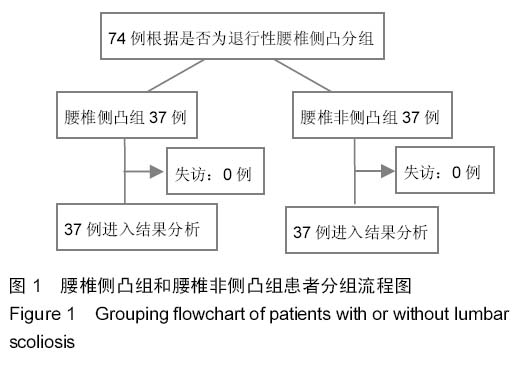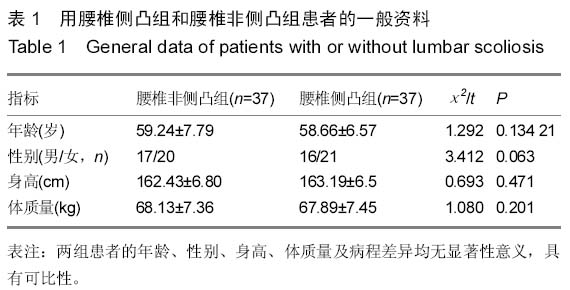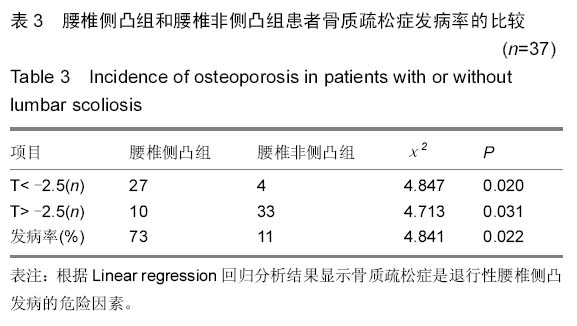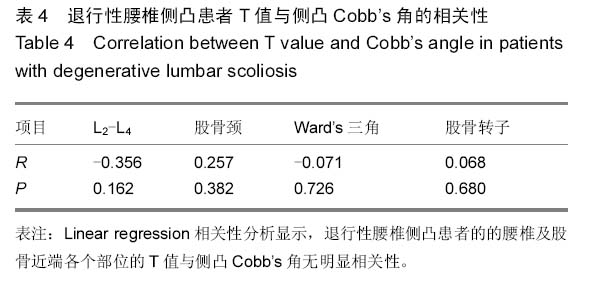中国组织工程研究 ›› 2015, Vol. 19 ›› Issue (20): 3124-3128.doi: 10.3969/j.issn.2095-4344.2015.20.002
• 骨组织构建 bone tissue construction • 上一篇 下一篇
退行性腰椎侧凸程度与骨质疏松症程度无关
彭毛加措1,高 强2
- 1青海省人民医院骨科,青海省西宁市 810000;2解放军第九二医院,福建省南平市 353000
Degenerative lumbar scoliosis has no correlation with osteoporosis
Pengmao Jiacuo1, Gao Qiang2
- 1Department of Orthopedics, Qinghai Provincial People’s Hospital, Xining 810000, Qinghai Province, China; 2the 92nd Hospital of PLA, Nanping 353000, Fujian Province, China
摘要:
背景:骨质疏松是以全身骨组织显微结构损坏及全身骨量减少为特征,有学者认为骨质疏松患者腰椎椎体前高不会减少,反而会有增加的趋势。 目的:分析退行性腰椎侧凸与骨质疏松症的相关性。 方法:选取退行性腰椎侧凸患者37例,另选取同期在住院治疗的腰椎非侧凸组患者37例。测量时采用改良Cobb法,沿患者的T12-L5各椎体上终板平行划线,2条线的最大夹角为侧凸角,两线所在椎体即为上、下端椎。运用双能X射线吸收法对患者L2-L4、股骨颈、Ward’s三角区以及股骨转子的骨密度进行测定。采用Linear regression对骨质疏松和退行性腰椎侧凸症的相关性进行分析 结果与结论:腰椎侧凸组患者L2-L4、股骨颈、Ward’s三角区以及股骨转子部位的骨密度T值与腰椎非侧凸组比较差异有显著性意义(P < 0.05),其中股骨各部位骨密度较腰椎(L2-L4)较低。腰椎侧凸组患者骨质疏松症发病率明显高于腰椎非侧凸组患者(P < 0.05)。Linear regression回归分析结果显示骨质疏松症是退行性腰椎侧凸发病的危险因素;退行性腰椎侧凸患者的腰椎及股骨近端各个部位的T值与侧凸Cobb’s角无明显相关性。结果提示,骨质疏松症是退行性腰椎侧凸发病的危险因素,同时骨质疏松程度与侧凸程度无关。
中图分类号:




